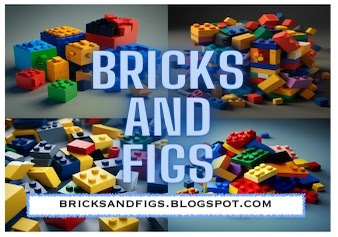Hey brick fans!
Some of you have asked me about the raised baseplates I'm using for my modular buildings, so this blog post will be a small tutorial and closer look at how they are constructed. Hopefully it will inspire you and give you some ideas for your own modular buildings.
It's still a work in progress, but I'm slowly migrating my modular building collection from classic baseplates to raised baseplates. Classic baseplates have a tendency to warp over time and tend to flex when lifted. Raised baseplates give my buildings a cleaner and consistent appearance in addition to providing more structural integrity underneath.
Just to be clear, my raised baseplates are not MILS plates, since mine have no connection points that allow the modular buildings to be connected to other plates such as roadways or other buildings. Here's an example of what MILS plates look like: https://www.brickaddict.net/road-plates. I don't need to have all my buildings attached to each other, because I like to rearrange them all the time for picture taking.
Today, we will look at how I make a raised baseplate for a 16x32 stud modular building, but the technique is the same if you have 32 stud wide modular buildings.
Essentially we are making a sandwich structure with some blocks placed in between two sets of plates. On the front of structure we place some SNOT bricks / technic stud bricks to which we will attach a fascia plate.
More on SNOT bricks here: https://bricknerd.com/home/snot-basics-geometry-techniques-and-pitfalls-3-18-2021
Here are all the parts you will need. First we start off with a classic baseplate (that's the thinner single sided ones.
We then place some bricks on the classic baseplate. It doesn't really matter the type of bricks that you use as long as you can attach them to the classic baseplate and then attach the regular plates on top. For our example today, I'm using two pieces of 16x16 plates to place over the bricks, but you could use whatever you have on hand.
You can use whatever technic bricks you have on hand, this is an example of 3 types of bricks you could use. The 1x2 brick above will give you the greatest clutch power for attaching the front fascia. For most of my builds, the 1x1 brick with hole and blue pin is my preferred choice.
Here is example one.
Here is example two.
And here's example three. As I have said earlier, it's up to you to use whatever you have on hand and see which method works best for you.














